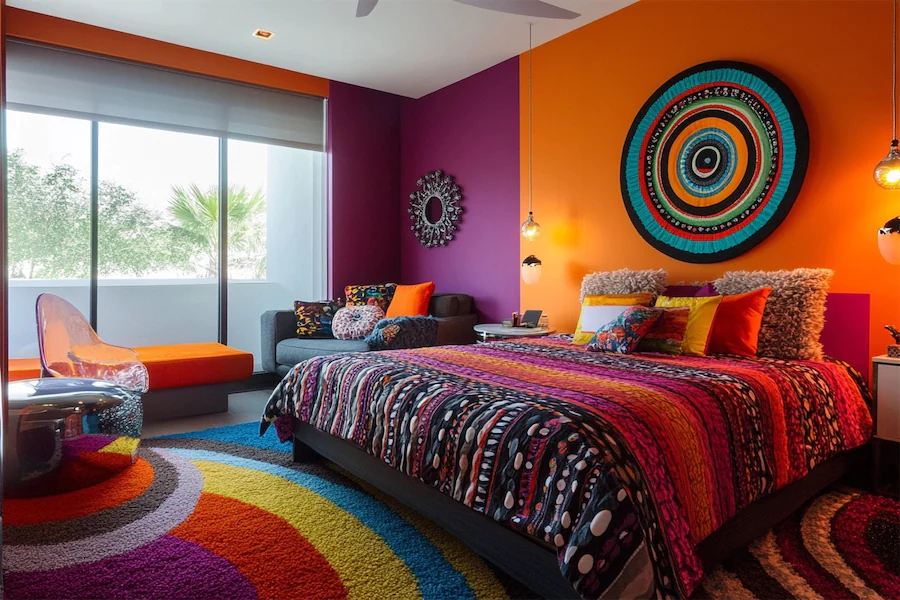Designing a colorful bedroom infuses vibrancy and personality into your personal space, creating an environment that reflects your unique style and energy.
Key Features of a Colorful Bedroom
- Bold Color Palettes: Incorporate a mix of bright and contrasting colors to create a lively atmosphere. Consider combinations like teal and coral, mustard yellow and navy blue, or pink and green to add depth and interest.
- Accent Walls: Paint one wall in a bold hue or apply patterned wallpaper to serve as a focal point, adding visual interest without overwhelming the space.
- Vibrant Textiles: Utilize colorful bedding, throw pillows, and rugs to introduce patterns and textures that enhance the room’s dynamic feel. Mix and match different fabrics to create a layered and cozy look.
- Artwork and Decor: Display art pieces, wall hangings, or decorative items in various colors to personalize the space and tie the color scheme together. Incorporate items that hold personal significance to make the room uniquely yours.
- Furniture Choices: Select furniture in bold colors or with colorful upholstery to make a statement and contribute to the overall theme. Alternatively, neutral furniture can be accented with colorful accessories for flexibility.
Applications of Colorful Bedroom Design
- Eclectic Style: Combine various colors, patterns, and textures to create a vibrant and personalized space that reflects a free-spirited aesthetic. Incorporate vintage finds and global-inspired decor for added character.
- Modern Design: Use a limited color palette with strategic pops of color to maintain a sleek and contemporary look while adding visual interest. Consider incorporating geometric patterns and minimalist furniture to enhance the modern feel.
- Bohemian Vibes: Incorporate rich, warm colors and layered textiles to achieve a cozy and inviting boho-inspired bedroom. Add elements like macramé wall hangings, woven baskets, and indoor plants to complete the look.
Considerations When Designing a Colorful Bedroom
- Color Balance: Ensure a harmonious balance by combining bold colors with neutral tones to prevent the space from becoming overwhelming. The 60-30-10 rule can be helpful: 60% dominant color, 30% secondary color, and 10% accent color.
- Natural Light: Consider the room’s natural lighting when selecting colors, as it can affect how hues appear in different times of the day. Test paint samples on the walls and observe them under various lighting conditions before making a final decision.
- Personal Preference: Choose colors that resonate with you and promote a positive mood, ensuring the bedroom remains a comfortable sanctuary. Consider how different colors affect your emotions and select hues that create the desired atmosphere.
Conclusion
A colorful bedroom offers an opportunity to express creativity and individuality, transforming the space into a lively and inviting retreat. By thoughtfully selecting color schemes, furnishings, and decor, you can create a harmonious and vibrant environment that reflects your personal style.
